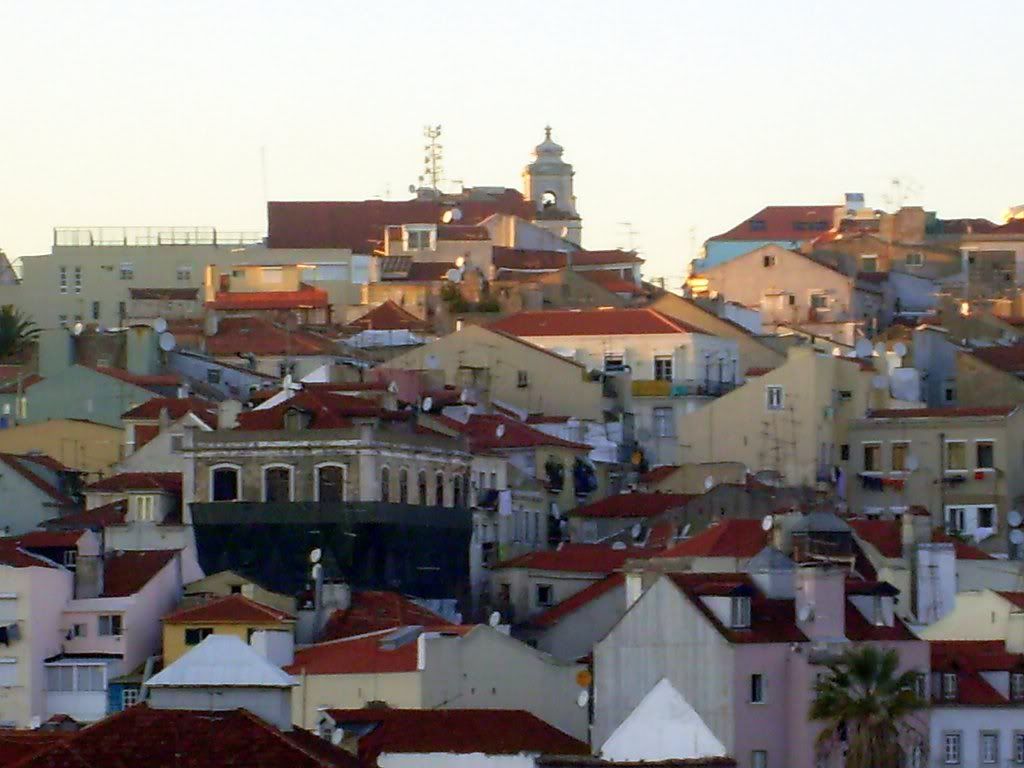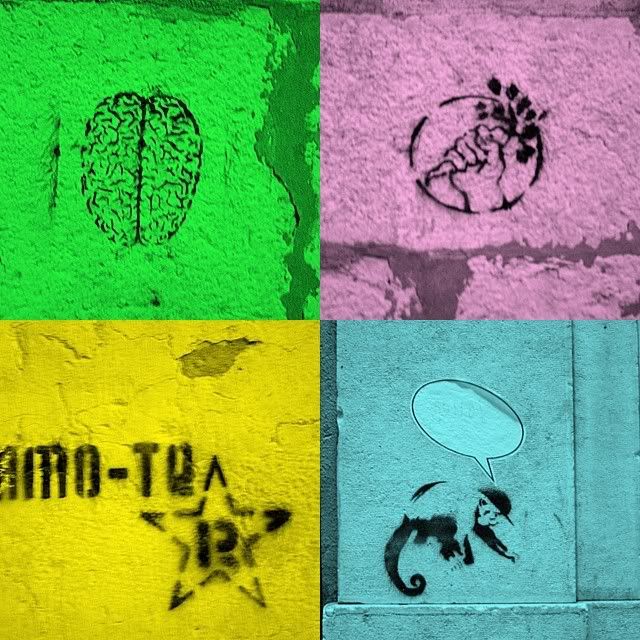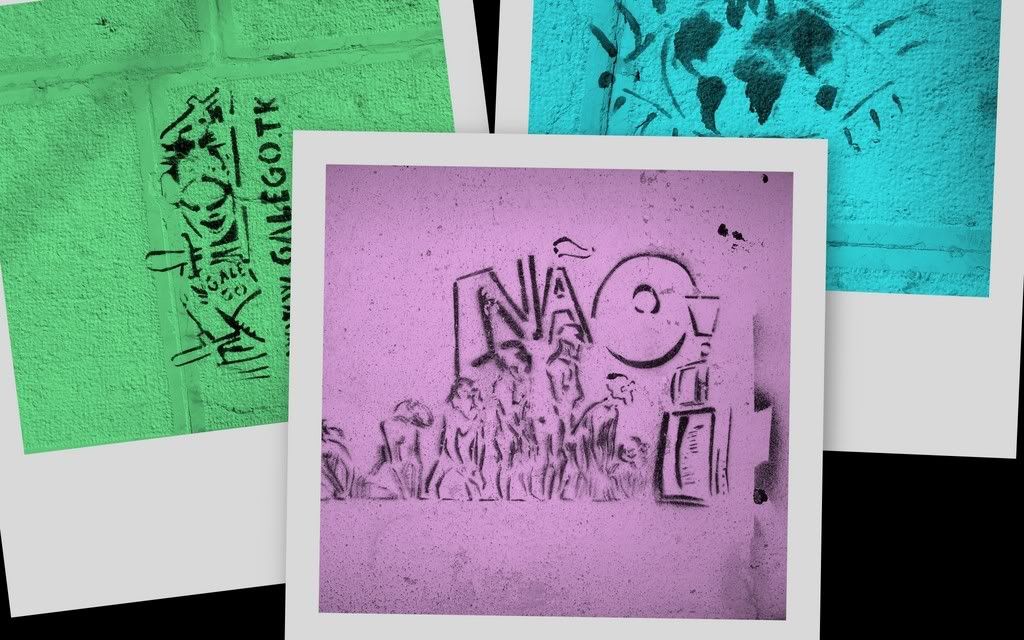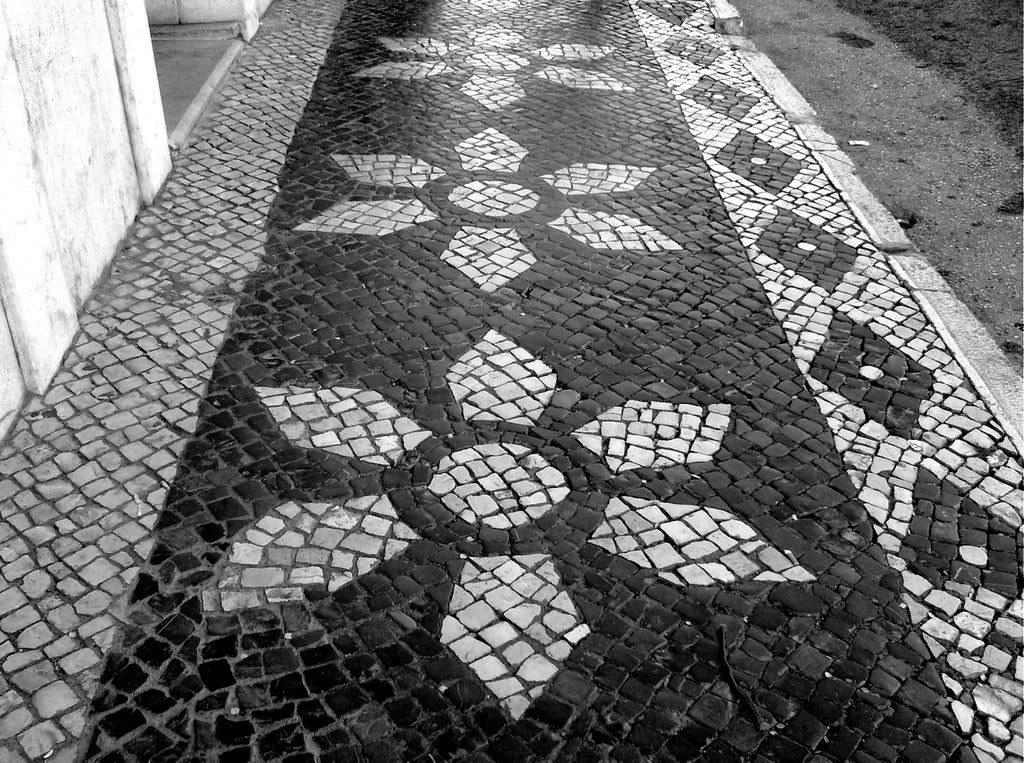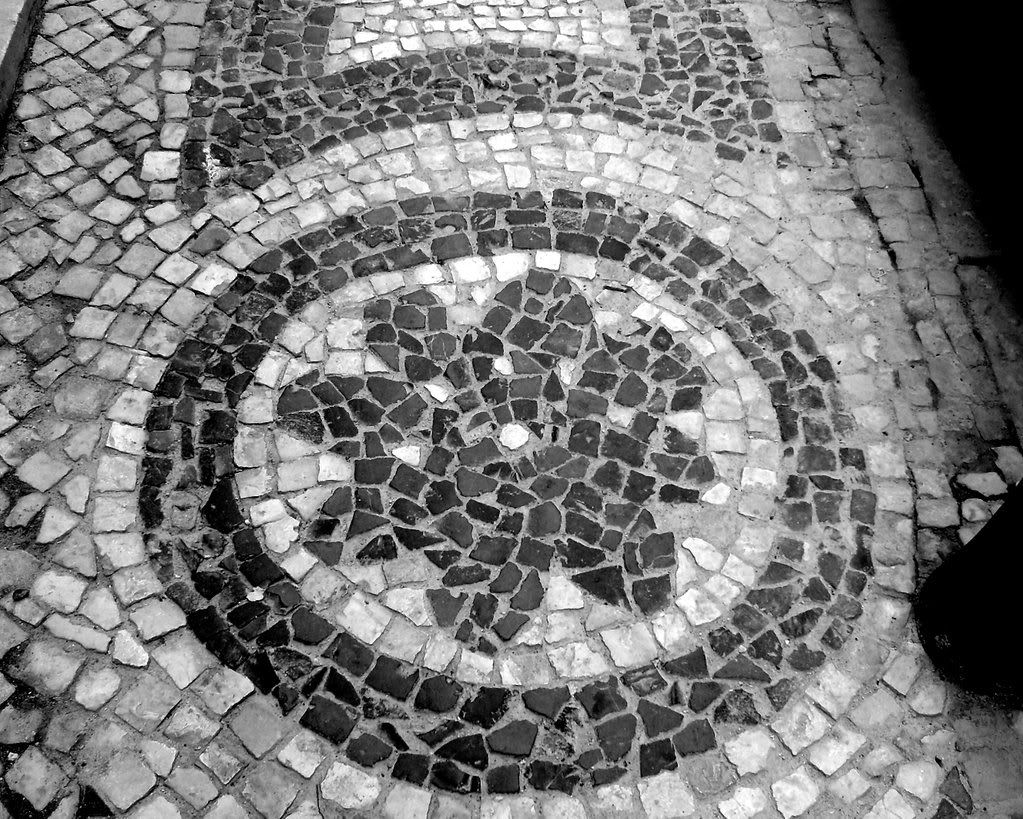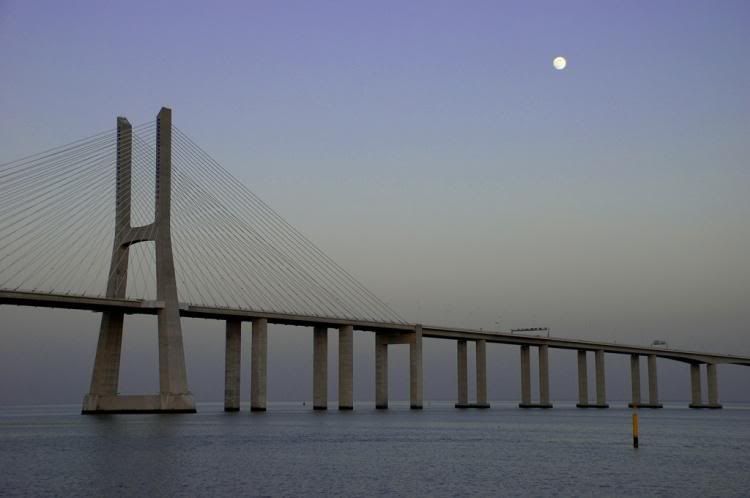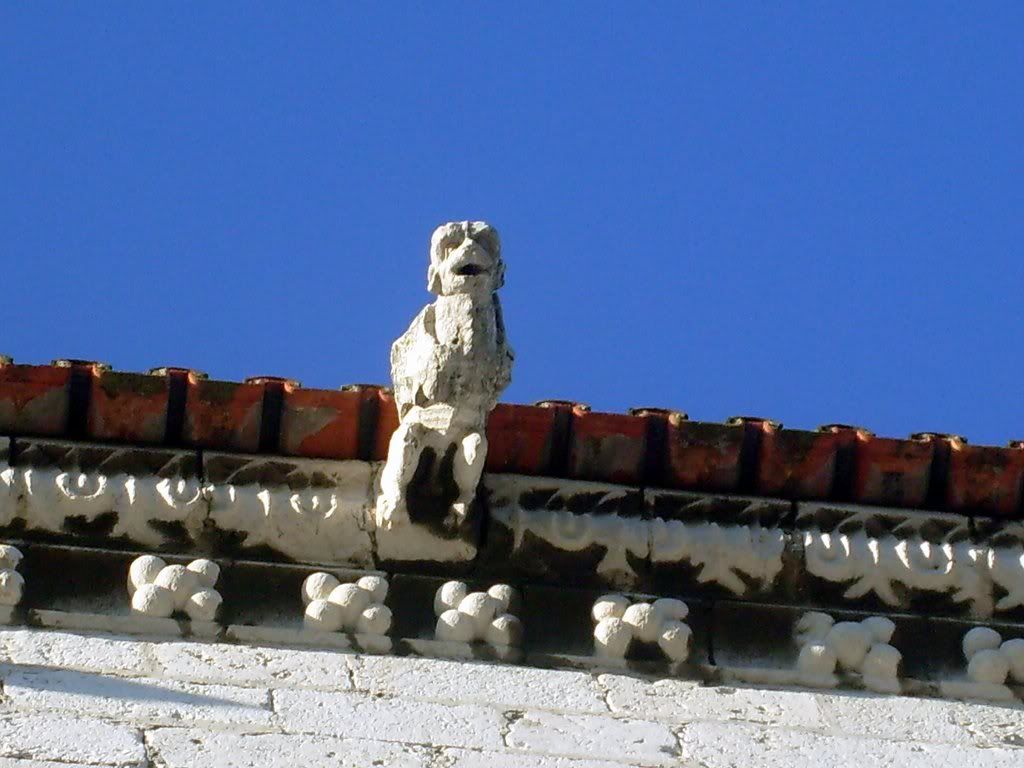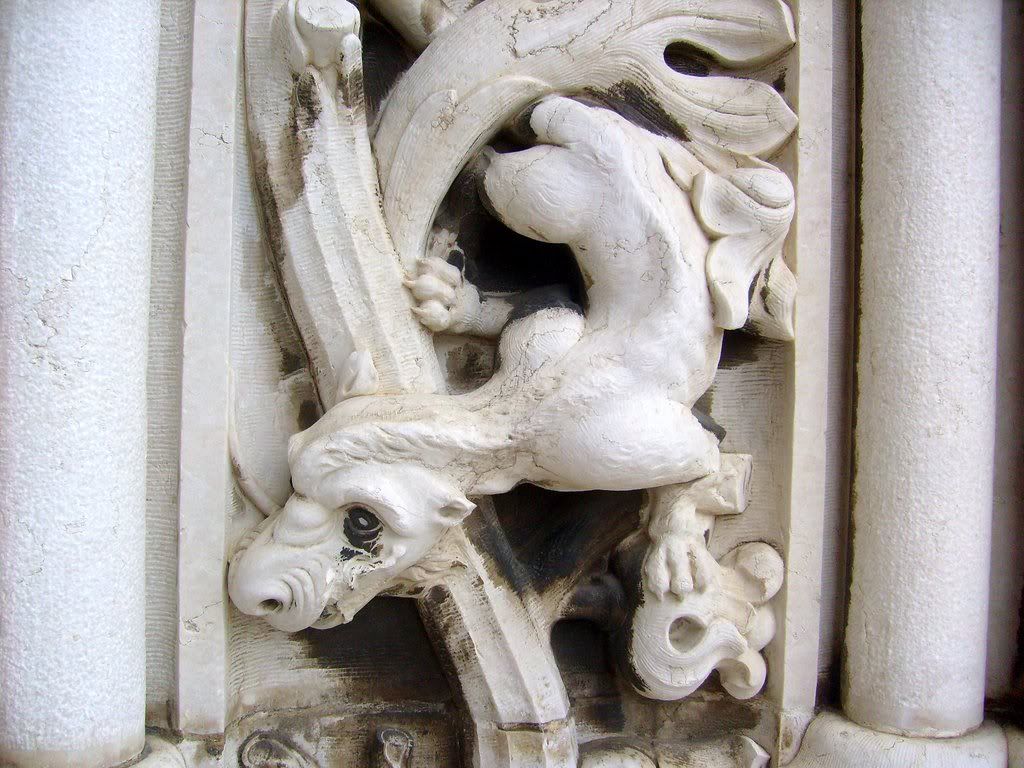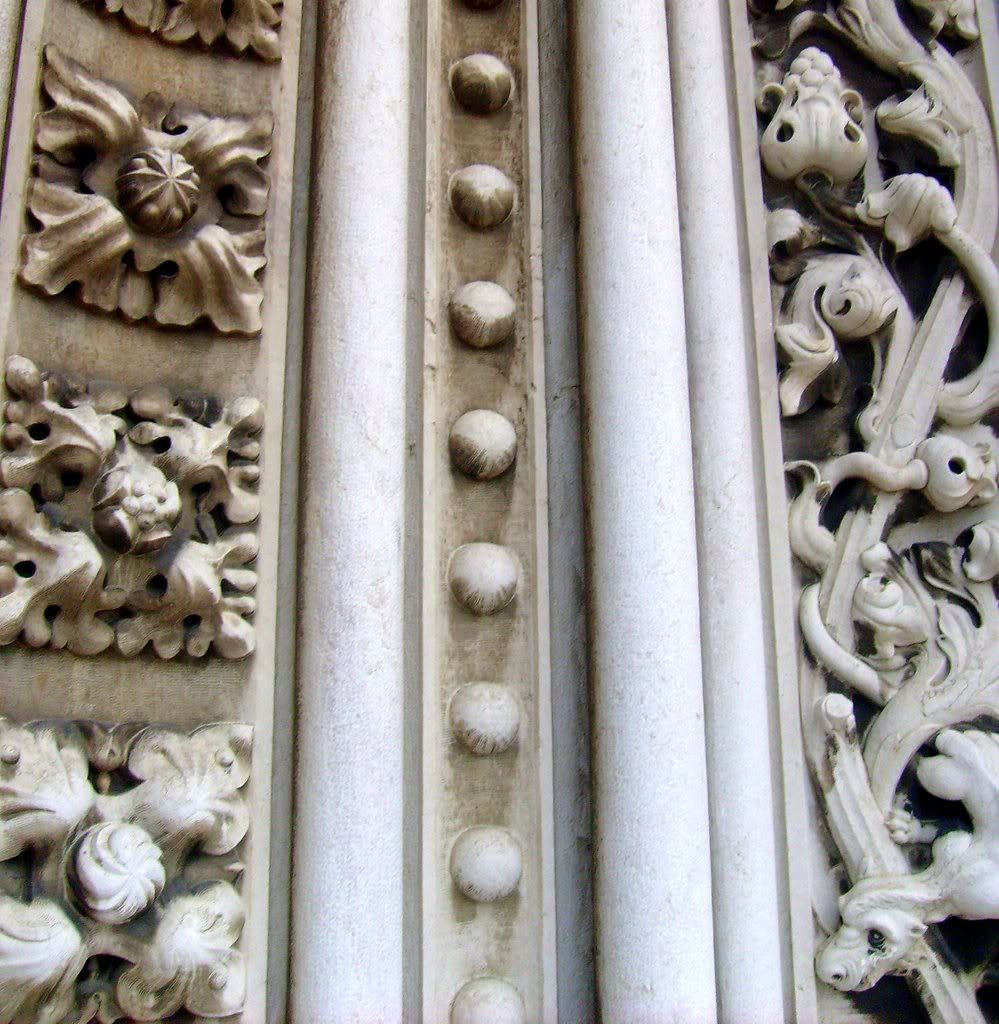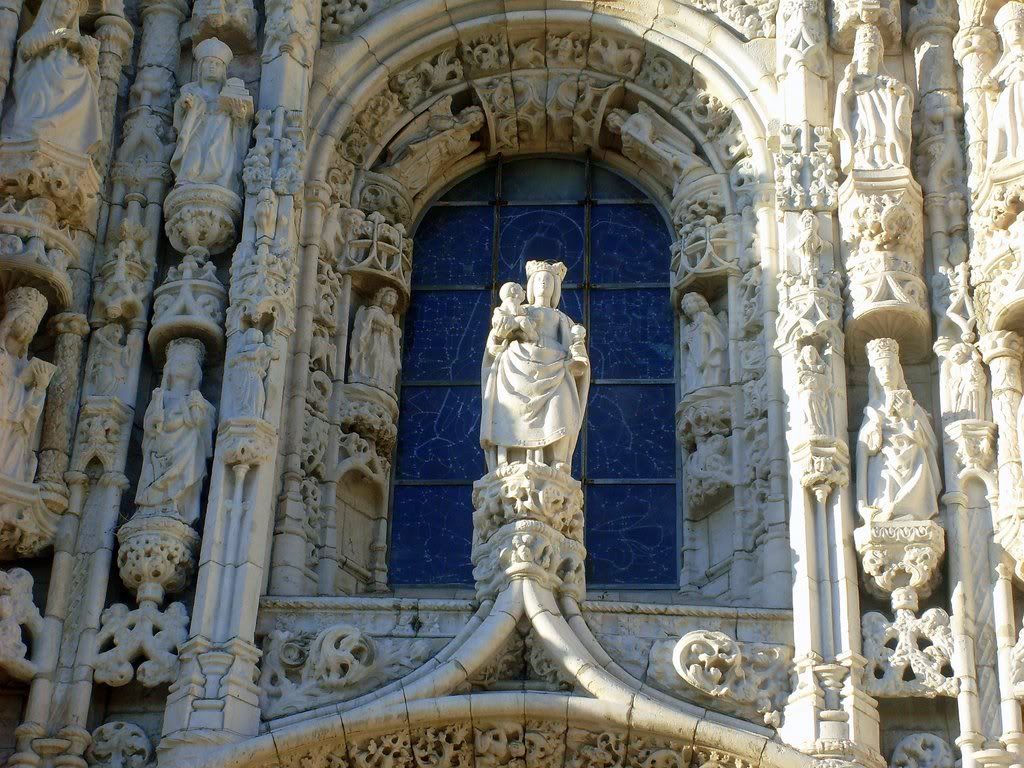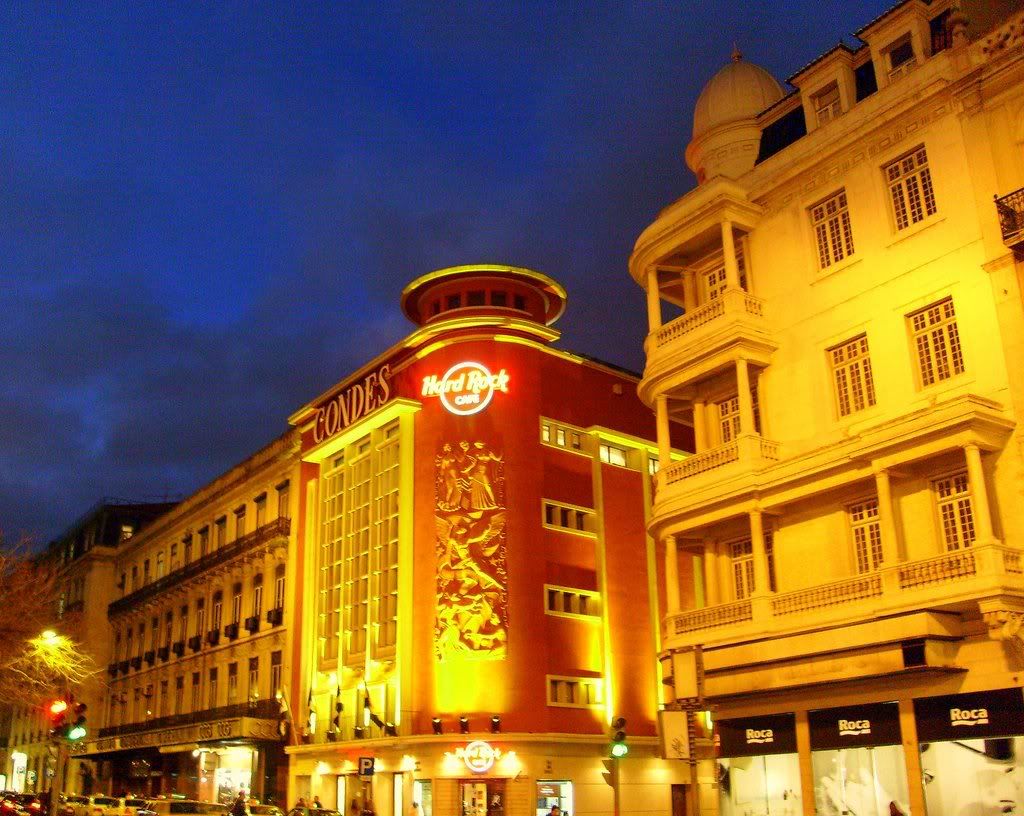29/02/2008
#60 - The spring has just arrived to my mothers balcony!
28/02/2008
27/02/2008
#58 - 3 in 1
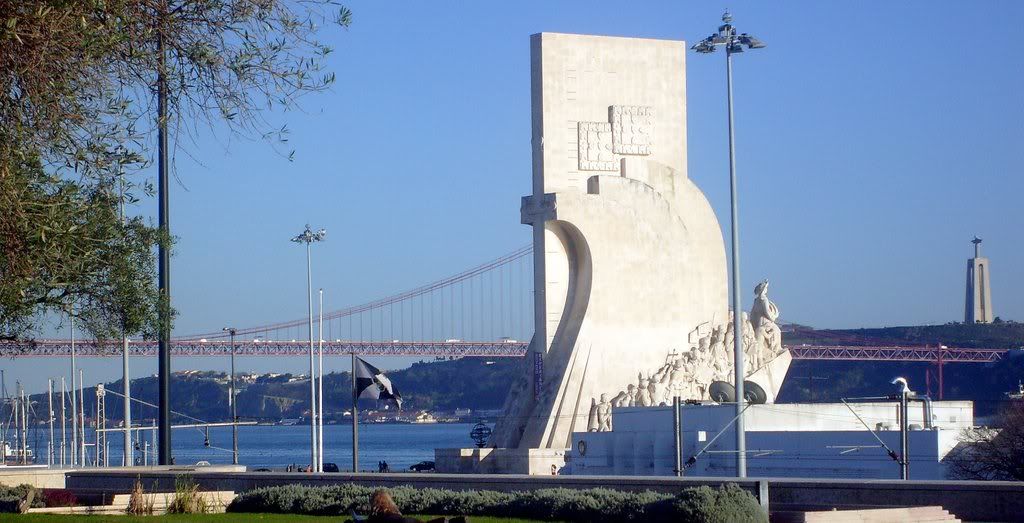
On the Almada side you will be able to see the towering monument of Cristo Rei, similar to the Redentor in Brazil, overlooking the Tagus. If you wish to go there, a lift will take you up 82m to the top of the pedestal, offering excellent views of the city and the river
The Monument to the Discoveries was inaugurated in 1960 during celebrations of the 500 year anniversary of the death of the Infant D. Henrique (Henry the Navigator). It evoques the maritime expansion and is designed in the shape of a caravel, showing Henry the Navigator at the prow holding a small caravel, as well as many relevant heroes of Portuguese history (Vasco da Gama, Pedro Álvares Cabral - discoverer of Brazil - Fernão Magalhães - who crossed the Pacific in1520 -, the writer Camões and many others). Seen from the huge mariners compass this monument fascinates visitors with its impressiveness and its 50 metres height. It is visited by millions of people each year. Cut into the paving stone, the compass was a present from the Republic of South Africa in 1960 and it's best seen from the top of the Monument to the Discoveries, that you can access by elevator located inside the building. The central map, depicting galleons and mermaids, shows the routes of the discoverers in the 15th and 16th centuries.It is located in Belém, on the bank of the River Tagus, in an unique monumental area and looks particularly dramatic in the light of the late afternoon sun. "
26/02/2008
#57 - Trapped
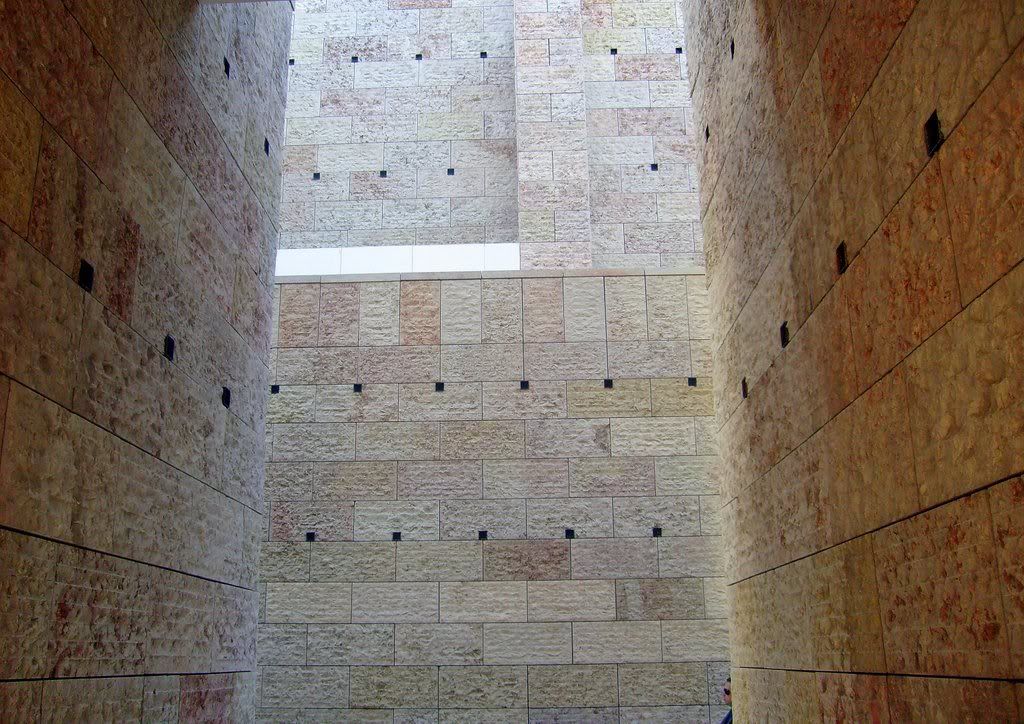
Trapped between walls! That's like I'm feeling now working all day and attend college at night. I do not have any free time left. I will try and keep posting everyday but I can not comment or visit your blogs with such regularity. I will do my best and visit you at weekends until middle of June.
Photo taken to the Cultural Centre of Belém. I dont know why but I love these walls.
25/02/2008
24/02/2008
23/02/2008
22/02/2008
#53 - Colorful Lisbon

21/02/2008
#52 - Ponte Vasco da Gama
The bridge was opened to traffic on March 29, 1998, 18 months after construction first began, just in time for Expo 98, the World's Fair that celebrated the 500th anniversary of the discovery by Vasco da Gama of the sea route from Europe to India."
20/02/2008
#51 - Santo antão
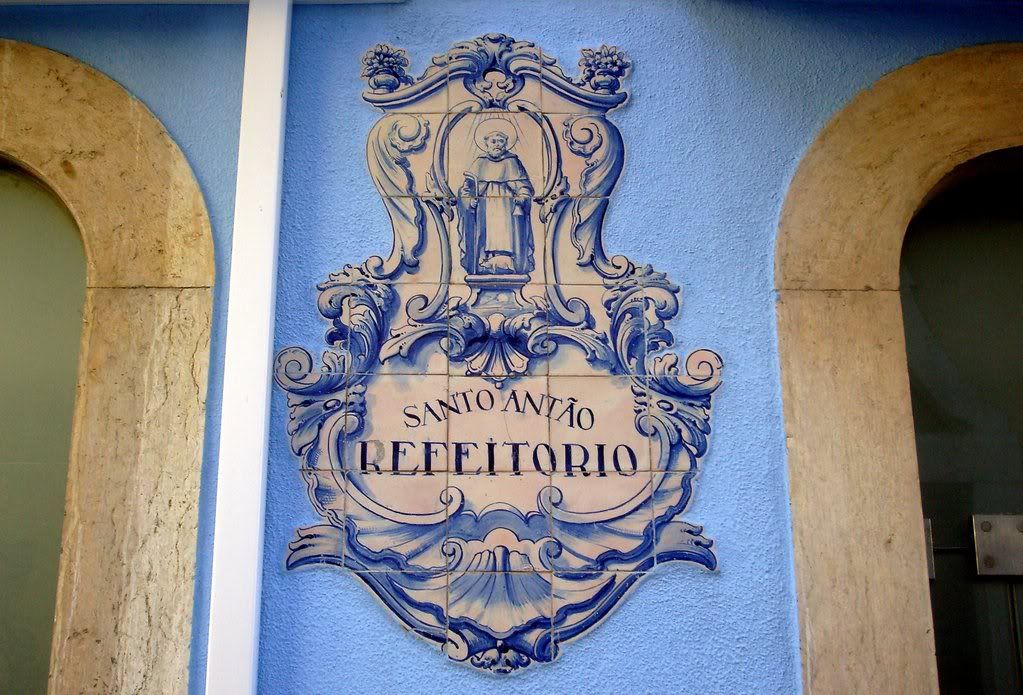
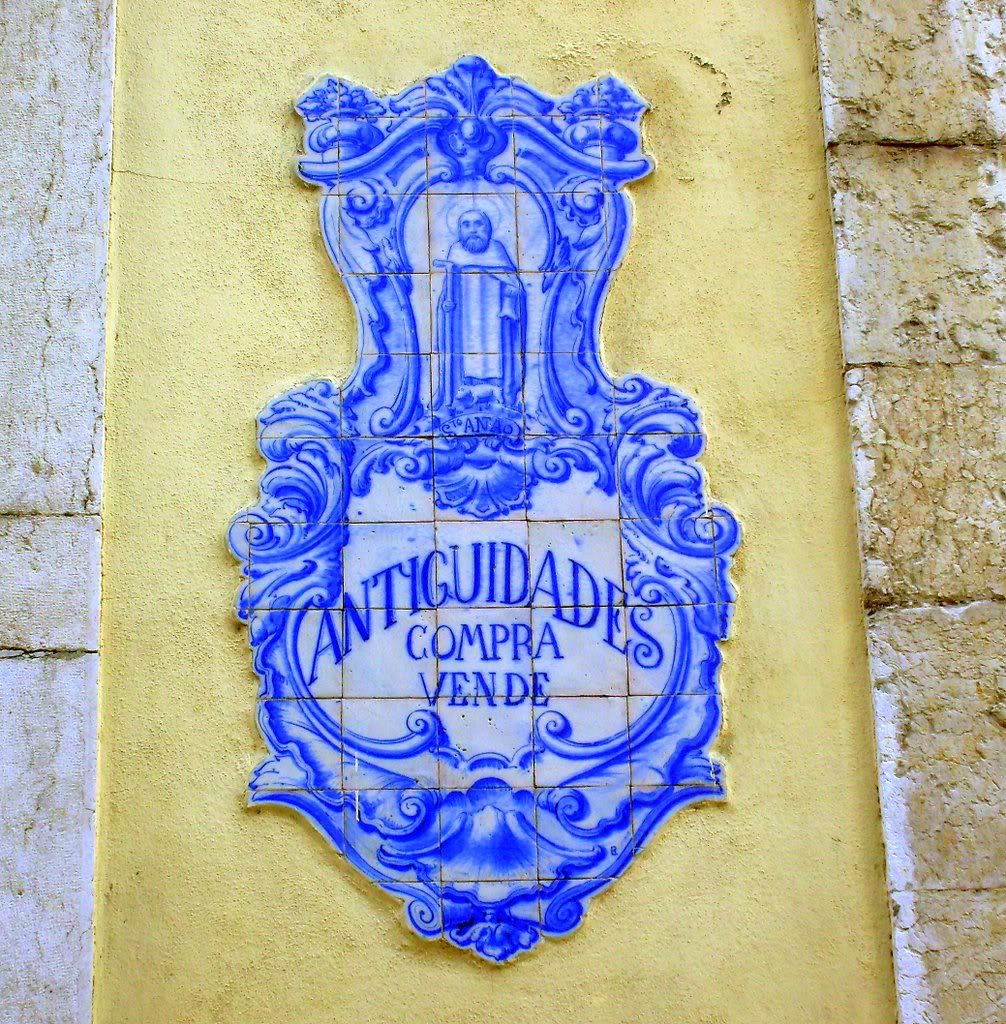
"Santo Antão was one of the founders of the monastery and is also called Anthony of Egypt. He was born in Fayum, in Egypt near Heracleopolis Magna in 251. Anthony went to a mountain in Pispir (now Deir el-Memum) and was there in a solitary life for 20 years. In 305 DC, Anthony emerged with great force and health. He was with the eremitas for 5 years, regulating the community work, prayers and penitence. Then he went to a desert between the Nile and the Red Sea, in a place called Mount Kalzim. A monastery, called Diem Mar Antonios, was erected on this site. This period of incarceration was not so restricted as the previous, because Anthony went to Alexandria in 311 comfort the martyrs of persecution that was happening at the time and he returned years later to argue vigorously against heresy ariana side by side of St. Athanasius of Alexandria . Antônio not alone in the desert. He had company and disciples. Anthony became known as a good man generous, courageous, with good sense and fair without any excess and ostentation. St. Athanasius has the credit of having done a biography of Anthony account that the details of their trials, suffering and miracles. Anthony was a friend of Sao Paulo, Thebes, called the "hermit" which received half of bread per day crows. Does the tradition that when Antonio was visiting him, the crows brought a whole bread. The Emperor Constantine, the Great (323-337) was one of thousands who sought Antonio for lessons and inspiration. Anthony wrote several letters and sermons to young eremitas. The life of Antonio, described by St. Athanaius also saved many of the sermons and speeches of Antônio. A monastic rule dated from that era is credited as having their ideals, their thoughts and their beliefs. Antonio died on January 17 of 365 and was buried in a pit not marked as his request, but in its 561 relics were discovered and he was transferred to Alexandria, Constantinople. La Motte, the house matrix of the Order of Hospitallers of St. Anthony, founded in 1100, states that has its relics. However, the scholars believe the matter, that the relics of St. Anthony of Sarracenos have been saved in Constantinople (now Istanbul, Turkey) in 635 DC. Relics of this saint are also considered as being in Siena, Italy and Burngundy, France. He is the patron of several orders and the Knights of St. Anthony and also of the poor, the sick, the butchers and domestic animals. He is invoked against fires and pests. He died with on January 17, 356 with 105 years."

19/02/2008
18/02/2008
#49 - History Lost

Front door
The National Museum of Archaeology "A centenary institution of Portuguese Culture" located in the Jerónimos Monastery .
Today’s National Museum of Archaeology (MNA) was founded in 1893 by Dr. José Leite de Vasconcelos. In more than a century of existence this Museum became a reference institution of Portuguese archaeology, with regular correspondence with museums, universities and research centres all over the World. The Museum’s collections gather the Founder’s first collections and those of Estácio da Veiga. Many other have been added, some come from other State departments (for example: archaeology collections of the old Portuguese Royal House, integrated in the Museum after the settlement of the Republic; archaeology collections of the former Beaux Arts Museum, incorporated when today’s National Museum of Ancient Art was created; etc.), another ones come from donations or legacies of collectors and devoted friends of the Museum; others come from the intense field work activity developed by the Museum or by other archaeologists; another ones from government dispatches, within the law, whenever archaeological finds in the Country are thought of national value.Besides the exhibitions, the Museum offers society (Portuguese and foreign) several other services. Conceived by its founder to be a kind of "Museum of the Portuguese Man", the MNA still follows the same basic vocation, that is, to account for the history of the settlement of our territory, from the beginning to the foundation of the nationality. It is the only institution in Portugal capable of doing it: because of its collections, its technical resources, its location in the Jerónimos Monastery (actual meeting point of nationals and foreigners), with special prominence to the schools from across the Country, which fully occupy the Museum's education department, yearly.
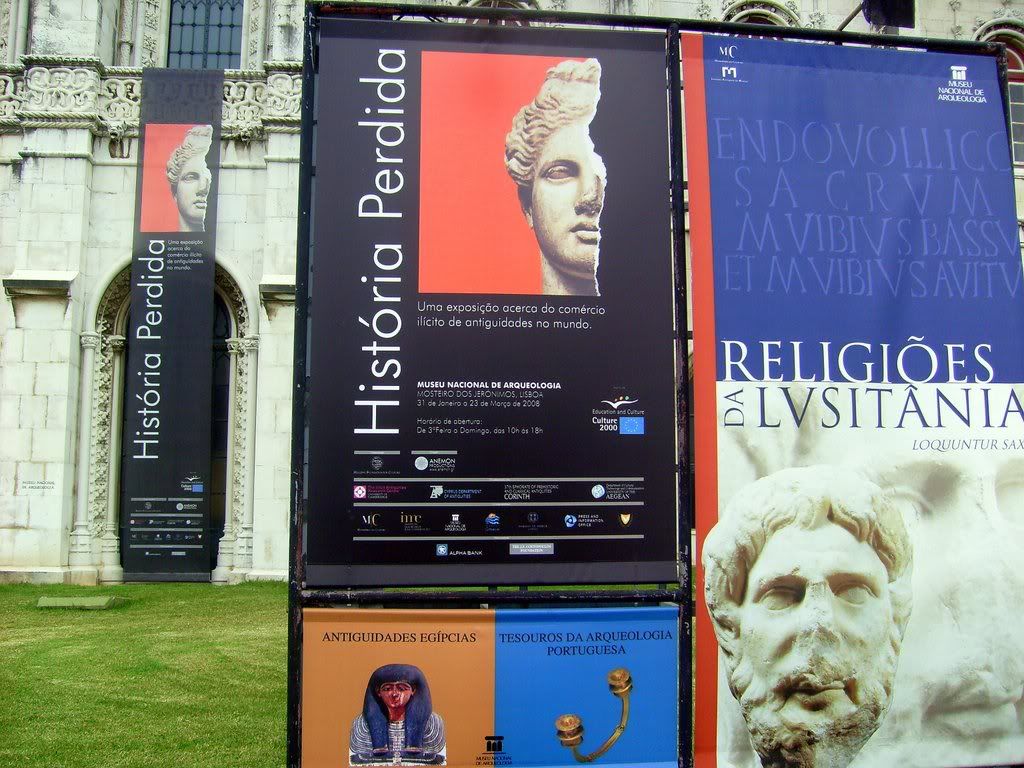
History Lost: An exhibition about the illicit trade of antiquities in the world.
Institutional organization: Hellenic Foundation for Culture.
Type of exhibition:International Cooperation Exhibition.
The removal of the Parthenon Marbles by Lord Elgin, in 1801, is famous. What is less well known is the extent of the looting of archaeological sites around the world today: that the majority of antiquities, which appear for sale on the art market, have been illegally dug and smuggled out of their country of origin.The steadily increasing number of museums in the U.S. and the rising demand for antiquities by private collectors in Europe, North America, Japan and Australia have exhausted the supply of legal antiquities. Few objects of the old collections, built up during the eighteenth century, are appearing on the market. The trade relies mainly on trafficking, theft and pillage. In contrast to the Elgin Marbles, the context and provenance of these objects will never be known. We will never know why they were created and what they have to say about our past. Taken out of context, they have lost their historical value. The escalating plunder of the world's archaeological heritage has not gone unnoticed by the international community. In 1970, UNESCO adopted the "Convention on the Means of Prohibiting and Preventing the Illicit Import, Export and Transfer of Ownership of Cultural Property". In 1972, after its ratification by four countries, the Convention went into effect. Today, 109 countries have adopted the Convention. The U.S. signed in 1983, Great-Britain in 2003.After the UNESCO Convention, museums, collectors and dealers still trading in antiquities of unknown provenance, began to use forged documents to cover their activities. As it was becoming increasingly difficult for western museums to buy antiquities, new large private collections were formed, containing previously unseen antiquities of unknown provenance. These collections, in turn, were exhibited, borrowed or bought by important museums in the West. Although the acquisitions made by large museums have been widely criticised, looting in Africa, Asia and Latin America has become more destructive due to the rise of art market prices. In Greece for example, due to the extensive looting of the Cyclades, we have lost the chance to find out more about the use and role of Cycladic idols and the history of these islands during the Bronze Age. Similarly, the destruction of Cyprus's cultural heritage intensified after the Turkish invasion. The antiquities trade spiralled out of control in the occupied northern part of Cyprus. It is estimated that 15,000 to 20,000 Byzantine icons, mosaics and wall-paintings have been stolen.
17/02/2008
#48 - Pasteis de Belém
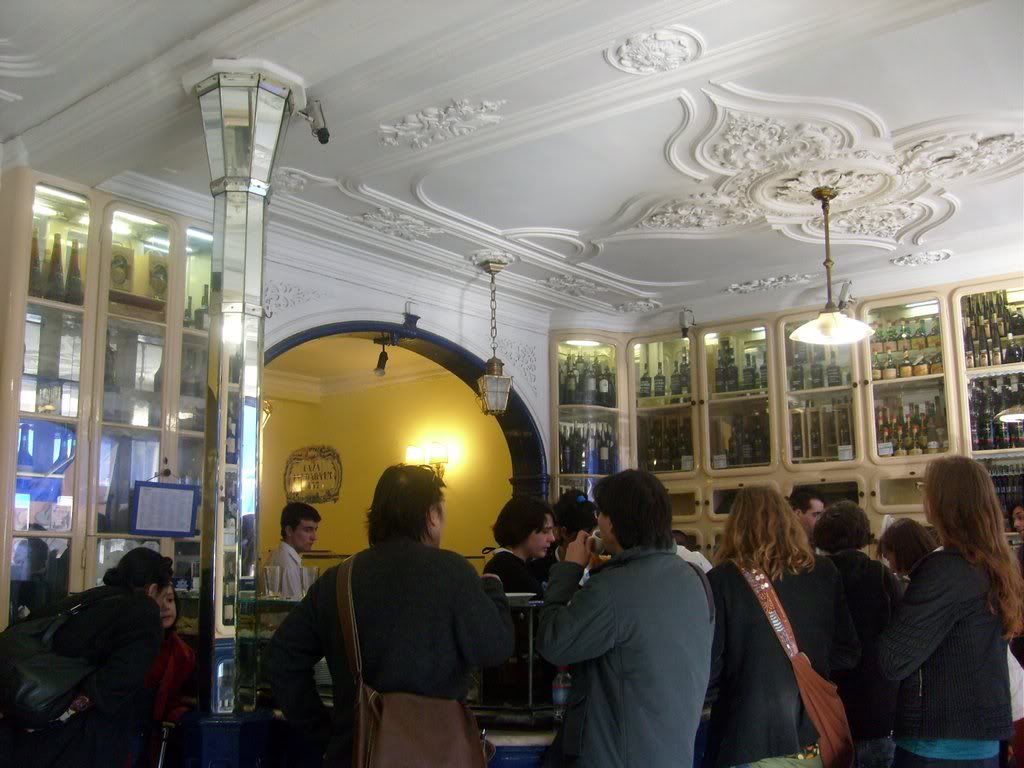
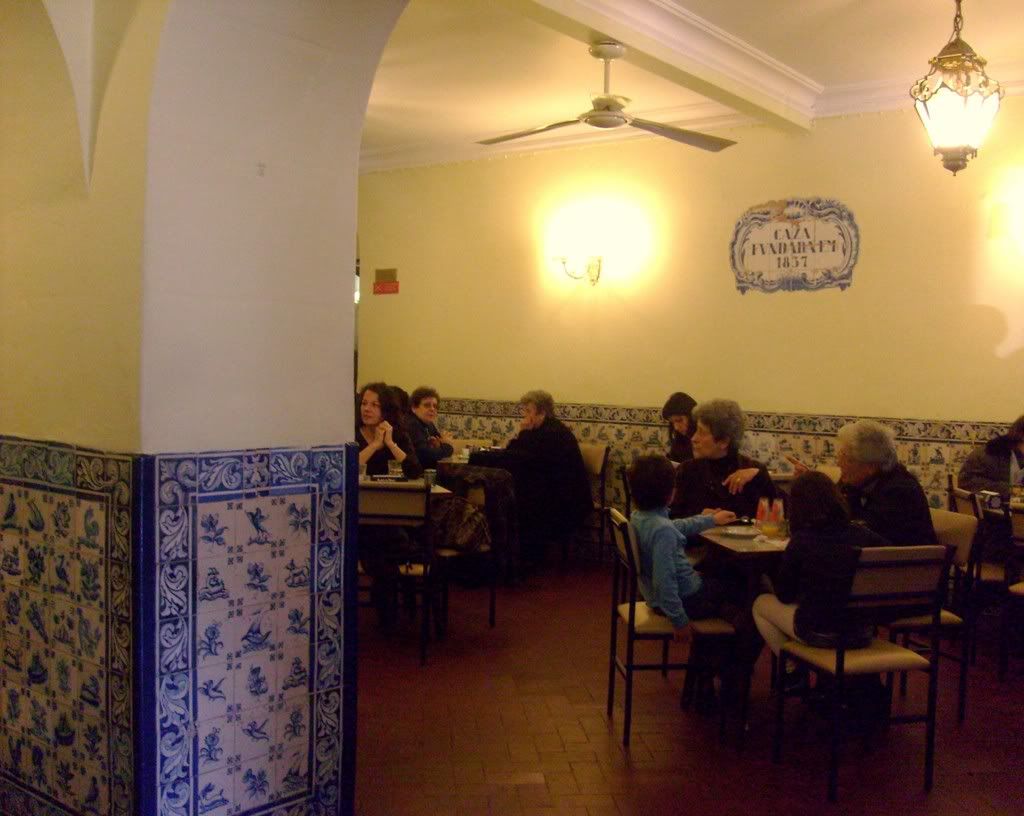
16/02/2008
15/02/2008
#46 - Love & Numbers
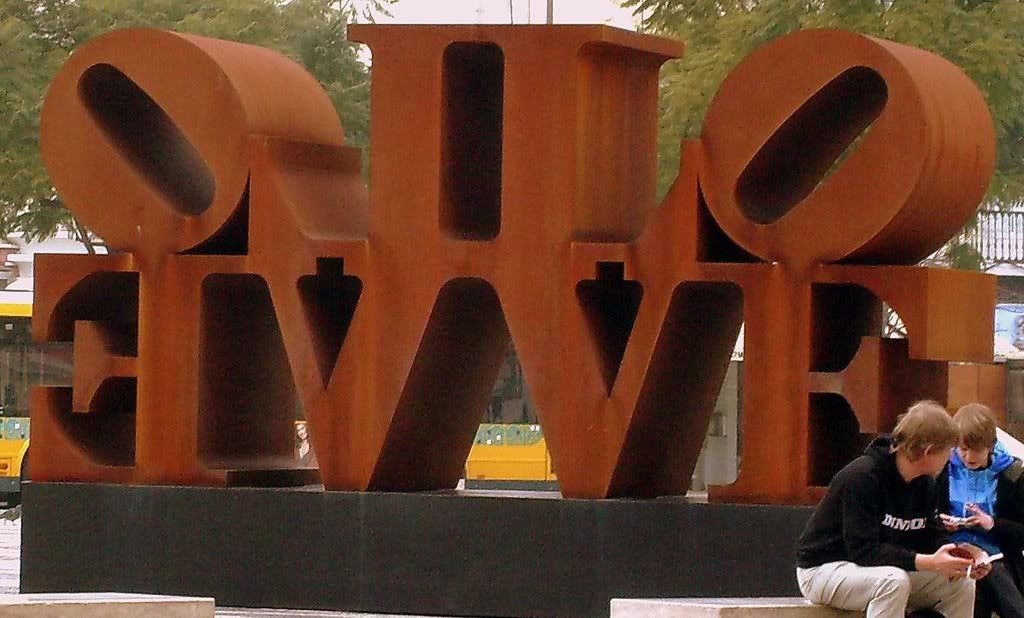
14/02/2008
#45 - The only way to build a memory is through sharing ...
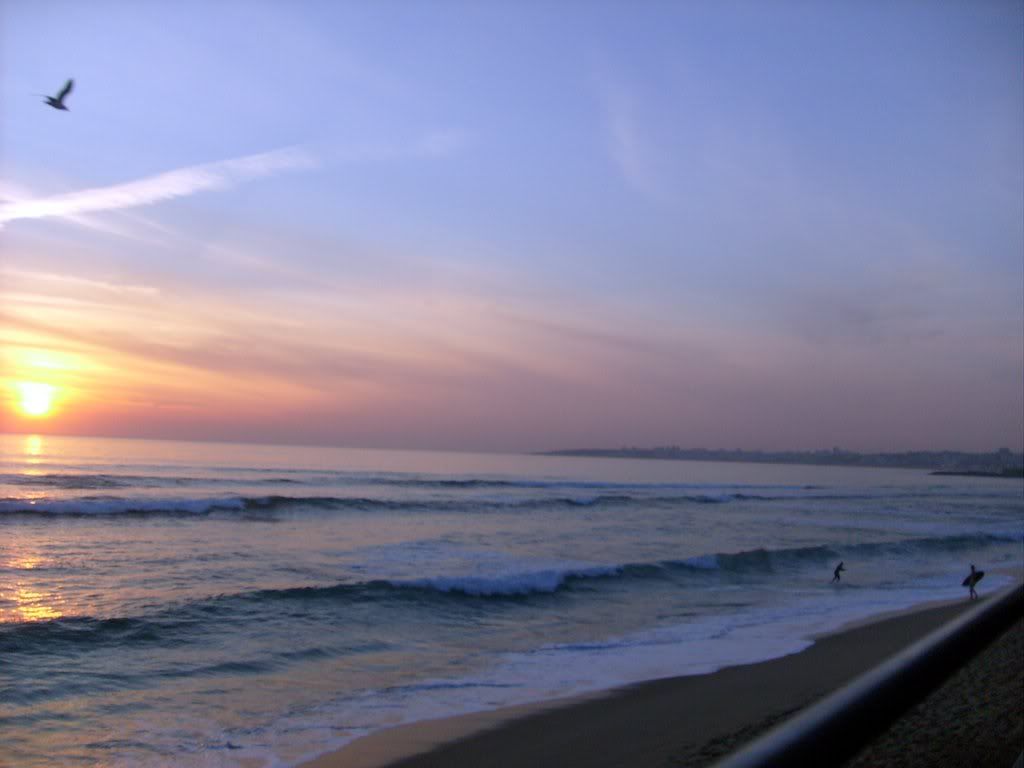
... and I had no time for it!
Today was especially tiring. I couldn't visit your blogs. Tomorrow or during the weekend I will find time to do so. It is by sharing that magic happens. The fatigue squeezes with the work all day and night classes. I am so tired that I can't think no more so I leave here this photo of a nice weekend I had before. Tomorrow I'll try to portray a scene of the day: The lovers! (I hope). Have a very Happy Valentine's Day!!
13/02/2008
#44 - The rapprochement

The Jerónimos Monastery is generally referred to as the "jewel" of Manueline architecture. The unique and beautiful Manueline style draws together architectural elements of the late Gothic and Renaissance periods, and associates them with the symbols of the king, Christianity and the natural world.
King Manuel I poured large sums of money into the building of the Monastery at Belém. A good part of what was called the "the pepper tax" (approximately 5% of the receipts from the spice trade with Africa and the East, the equivalent of 70kg of gold per year) served to pay for the work, which, from the beginning, was strictly dependent on the King. In the 19th century architectural changes were made to the Monastery. These did not change its basic structure, but gave it the form we know today. A cupola bell chamber, the dormitory (today the Archaeological Museum) and the Chapter House were some of the places, which were, altered the most."
12/02/2008
#43 - Hard Rock Café
11/02/2008
#42 - Detailed facade of Museu Nacional dos Coches
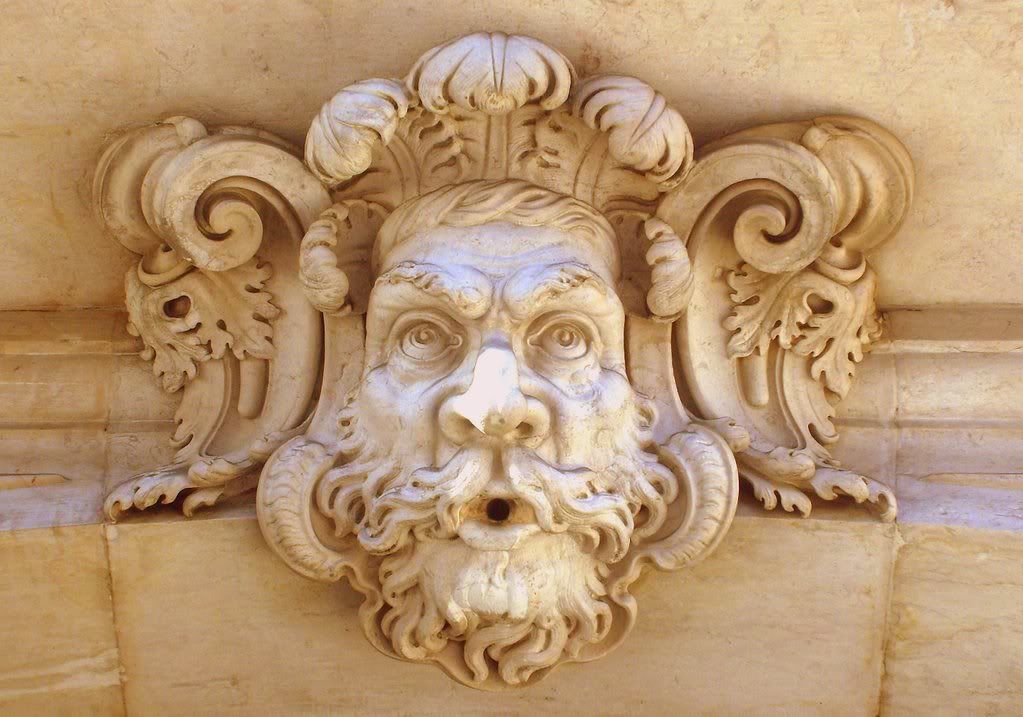
The National Coach Museum is one of the most visited museums in Portugal and certainly of Lisbon."
10/02/2008
#41 - Pelourinho dos Távora
09/02/2008
#40 - A Lighthouse in Belém

08/02/2008
07/02/2008
#38 - Néctar

 The Berardo Collection Museum is located at the Center of Exhibitions of the Centro Cultural de Belém Founded by José Berardo, is a permanent museum with temporary exhibitions, a partnership public - private, geared to a diverse audience with the aim of developing and encouraging habits of artistic enjoyment, integrating Lisbon in an area of cultural tourism. This space was amended and its relationship with the outside world enhanced. It has been adapted to contemporary existing architecture in order to find a dialogue between the space and art that incorporates. In their logic is the exploitation of art of the century XX and XXI little cultivated so far in Portugal, is looking well fill the gap, making known the evolution of art during this period, as well as promoting dialogue between the works of art through a cross look on the various trends, movements and techniques. Demand is attracting the public through a diverse organization of the works in seven clusters: Autonomy; Power of Color; Reeinvented Figure; Minimalisms; Pop & Ca; Surrealism, and More In addition, which has a turn over of three months. Thus the existing 856 works only 150 are exposed. Over that we could discover from exposure, it presents itself to us as a catalog of the panorama of artistic creation of the century XX and XXI, especially European and American, trying however to give prominence to the late artistic creation ports. A travel between games and the surreal dreams, the conscious and aware of the artists, the techniques of chance not controlled by the mind, by the introduction of a 4 th dimension, time, in the painting by Picasso, for psychoanalysis, the analysis of dreams, the eroticism, a society of consumption, the voyeurism, the representations of language, the aura of the objects of everyday life when they go for the artistic context, etc., via the Surrealism, Pop Art, abstrakt Arte , New Objectivity, Minimalism, Conceptualism and Arte Povera. On the exterior of the exhibition there is a double work of about seven metres from the artist Joana Vasconcelos, a feminist version of the famous "Le Porte Bouteilles" Marcel Duchamp. Entry of each of the cores can be found explanatory leaflets in Portuguese, English and French as well as writings on the wall the pink or green, if they relate to a class chronological or thematic, respectively. The objects are presented only for visual and consists of painting, sculpture, photography, video, books and documents. The works are exhibited on the wall, showcases, as well as on the floor. The expositive criteria is chronological and thematic, giving all works the same narrative importance regardless of its value.
The Berardo Collection Museum is located at the Center of Exhibitions of the Centro Cultural de Belém Founded by José Berardo, is a permanent museum with temporary exhibitions, a partnership public - private, geared to a diverse audience with the aim of developing and encouraging habits of artistic enjoyment, integrating Lisbon in an area of cultural tourism. This space was amended and its relationship with the outside world enhanced. It has been adapted to contemporary existing architecture in order to find a dialogue between the space and art that incorporates. In their logic is the exploitation of art of the century XX and XXI little cultivated so far in Portugal, is looking well fill the gap, making known the evolution of art during this period, as well as promoting dialogue between the works of art through a cross look on the various trends, movements and techniques. Demand is attracting the public through a diverse organization of the works in seven clusters: Autonomy; Power of Color; Reeinvented Figure; Minimalisms; Pop & Ca; Surrealism, and More In addition, which has a turn over of three months. Thus the existing 856 works only 150 are exposed. Over that we could discover from exposure, it presents itself to us as a catalog of the panorama of artistic creation of the century XX and XXI, especially European and American, trying however to give prominence to the late artistic creation ports. A travel between games and the surreal dreams, the conscious and aware of the artists, the techniques of chance not controlled by the mind, by the introduction of a 4 th dimension, time, in the painting by Picasso, for psychoanalysis, the analysis of dreams, the eroticism, a society of consumption, the voyeurism, the representations of language, the aura of the objects of everyday life when they go for the artistic context, etc., via the Surrealism, Pop Art, abstrakt Arte , New Objectivity, Minimalism, Conceptualism and Arte Povera. On the exterior of the exhibition there is a double work of about seven metres from the artist Joana Vasconcelos, a feminist version of the famous "Le Porte Bouteilles" Marcel Duchamp. Entry of each of the cores can be found explanatory leaflets in Portuguese, English and French as well as writings on the wall the pink or green, if they relate to a class chronological or thematic, respectively. The objects are presented only for visual and consists of painting, sculpture, photography, video, books and documents. The works are exhibited on the wall, showcases, as well as on the floor. The expositive criteria is chronological and thematic, giving all works the same narrative importance regardless of its value.06/02/2008
#37 - Maxime

 Maxime was a luxury cabaret, there came the King of Spain and elements of the great Portuguese families. In recent times was delivered to the underworld of prostitution. Then through a more dubious stage, but reborn from the ashes with a new environment, that a certain charm "decadent-chic" with a dynamic schedule, concerts, stand-up comedy and other events. Manuel Joao Vieira (vocalist of Ena Pá 2000 and Irmãos Catita) took the reins to Maxime and recovered the real joy in this institution of the Praça da Alegria (Plaza of Joy) that is in fashion again and shaking the Lisbon nights.
Maxime was a luxury cabaret, there came the King of Spain and elements of the great Portuguese families. In recent times was delivered to the underworld of prostitution. Then through a more dubious stage, but reborn from the ashes with a new environment, that a certain charm "decadent-chic" with a dynamic schedule, concerts, stand-up comedy and other events. Manuel Joao Vieira (vocalist of Ena Pá 2000 and Irmãos Catita) took the reins to Maxime and recovered the real joy in this institution of the Praça da Alegria (Plaza of Joy) that is in fashion again and shaking the Lisbon nights. 05/02/2008
#36 - "Discover a new world"
04/02/2008
03/02/2008
#34 - Chill out tour
02/02/2008
#33 -Old & New
 Yesterday image was on a tourist tram. Today we can see in the same place the regular trams , old and new. For more information hit Carris home page.
Yesterday image was on a tourist tram. Today we can see in the same place the regular trams , old and new. For more information hit Carris home page.01/02/2008
#32 - Frebruary Monthly Theme "When people think of my city, they think of Trams"
 A tram, tramcar, trolley, trolley car, or streetcar is a railborne vehicle, lighter than a train, designed for the transport of passengers (and/or, very occasionally, freight)on urban streets. Tram systems (or "tramways" or "street railways") were common throughout the industrialized world in the late 19th and early 20th centuries, but they disappeared from many cities in the mid-20th century. In recent years, they have made a comeback. Many newer light rail systems share features with trams, although a distinction is usually drawn between the two, especially if the line has significant off-street running.
A tram, tramcar, trolley, trolley car, or streetcar is a railborne vehicle, lighter than a train, designed for the transport of passengers (and/or, very occasionally, freight)on urban streets. Tram systems (or "tramways" or "street railways") were common throughout the industrialized world in the late 19th and early 20th centuries, but they disappeared from many cities in the mid-20th century. In recent years, they have made a comeback. Many newer light rail systems share features with trams, although a distinction is usually drawn between the two, especially if the line has significant off-street running.Themes around the world: Portland (OR), USA - Menton, France - Monte Carlo, Monaco - Memphis (Tennessee), USA - Manila, Philippines - San Diego (CA), USA - Anderson (SC), USA - New York City (NY), USA - San Diego (CA), USA - Mexico City, Mexico - San Francisco (CA), USA - Mumbai (Maharashtra), India - Mainz, Germany - Weston (FL), USA - Minneapolis (MN), USA - Turin, Italy - Las Vegas (NV), USA - Hobart (Tasmania), Australia - Bicheno, Australia - Durban, South Africa - Joplin (MO), USA - Nashville (TN), USA - Stockholm, Sweden - Kyoto, Japan - Tokyo, Japan - Brussels, Belgium - Chicago (IL), USA - Montpellier, France - Seattle (WA), USA - Mazatlan, Mexico - Saint Paul (MN), USA - Sharon (CT), USA - Sesimbra, Portugal - Toulouse, France - Tuzla, Bosnia and Herzegovina - Susanville (CA), USA - Maple Ridge (BC), Canada - Saint Louis (MO), USA - Prague, Czech Republic - Helsinki, Finland - Pilisvörösvár, Hungary - Lisbon, Portugal - Mexico (DF), Mexico - Trujillo, Peru - Dunedin (FL), USA - Albuquerque (NM), USA - Port Angeles (WA), USA - Cottage Grove (MN), USA - Saint-Petersburg, Russian Federation - Kuala Lumpur, Malaysia - London, UK - Baziège, France - Jefferson City (MO), USA - Greenville (SC), USA - Selma (AL), USA - Mumbai, India - Naples (FL), USA - Norwich (Norfolk), UK - Silver Spring (MD), USA - Setúbal, Portugal - Stayton (OR), USA - Bellefonte (PA), USA - Sofia, Bulgaria - Arradon, France - Montego Bay, Jamaica - Athens, Greece - Austin (TX), USA - Singapore, Singapore - West Sacramento (CA), USA - Jackson (MS), USA - Wassenaar (ZH), Netherlands - Budapest, Hungary - Rotterdam, Netherlands - St Malo, France - Chandler (AZ), USA - Melbourne, Australia - Port Vila, Vanuatu - Cleveland (OH), USA - Nottingham, UK - Kansas City (MO), USA - The Hague, Netherlands - Crystal Lake (IL), USA - Wrocław, Poland - Chateaubriant, France - Cheltenham, UK - Moscow, Russia - Monrovia (CA), USA - Saigon, Vietnam - Toruń, Poland - Grenoble, France - Lisbon, Portugal - New Orleans (LA), USA - Sydney, Australia - Boston (MA), USA - American Fork (UT), USA - Boston (MA), USA - Montréal (QC), Canada - Wichita (KS), USA - Radonvilliers, France - Buenos Aires, Argentina - Christchurch, New Zealand - Rabaul, Papua New Guinea - Wailea (HI), USA - Aliso Viejo (CA), USA - St Francis, South Africa - Port Elizabeth, South Africa - Seattle (WA), USA - Pasadena (CA), USA - Vienna, Austria - Orlando (FL), USA - Torun, Poland - Delta (CO), USA - Santa Fe (NM), USA - Minneapolis (MN), USA - Haninge, Sweden - Paris, France - Stavanger, Norway - Niamey, Niger - Le Guilvinec, France - Bogor, Indonesia - Saarbrücken, Germany - Auckland, New Zealand - Wellington, New Zealand - Budapest, Hungary - Juneau (AK), USA - Bucaramanga (Santander), Colombia - Glasgow, Scotland - Chicago (IL), USA - Jakarta, Indonesia - Adelaide (SA), Australia - Sydney, Australia - Riga, Latvia - Subang Jaya (Selangor), Malaysia


